New Product Spotlight: S&S Diesel Motorsport’s CP4.2 Bypass Kit
Today’s diesel trucks are nothing short of phenomenal. No matter which horse you pick, it’ll have an engine that turns out more than 900 lb-ft of torque, be capable of safely towing 35,000 pounds and do it with virtually zero tailpipe emissions. Without state-of-the-art, high-pressure common-rail fuel systems onboard these behemoths, none of this would be possible, but simply making use of this cutting edge, 30,000-psi technology doesn’t make these systems bulletproof. In fact, in the case of the LML Duramax and the 6.7L Power Stroke, there is one major drawback: the Bosch CP4.2.
The pump itself is simple, easy to package and highly efficient, but thanks to one internal aspect of its design it’s known to fail catastrophically. When the CP4.2 lets go, the fuel rails and injectors downstream of it almost always end up beside it on the scrap pile. While GM no longer offers the CP4.2 on its Duramax mill, the 6.7L Power Stroke continues to employ one at the front of the valley, which means this sudden, hard-to-detect failure that can cost you as much as $10,000 is always lying in wait on your ’11-present Super Duty.
In an effort to minimize the damage incurred when a CP4.2 self-destructs, the common-rail experts and former Bosch engineers at S&S Diesel Motorsport have come up with a CP4.2 Bypass kit, a system that saves your expensive injectors and fuel rails in the event of a CP4.2 failure. To see how the kit works and why your 6.7L Ford needs it, keep reading.
Bosch CP4.2: Everyone’s Using It
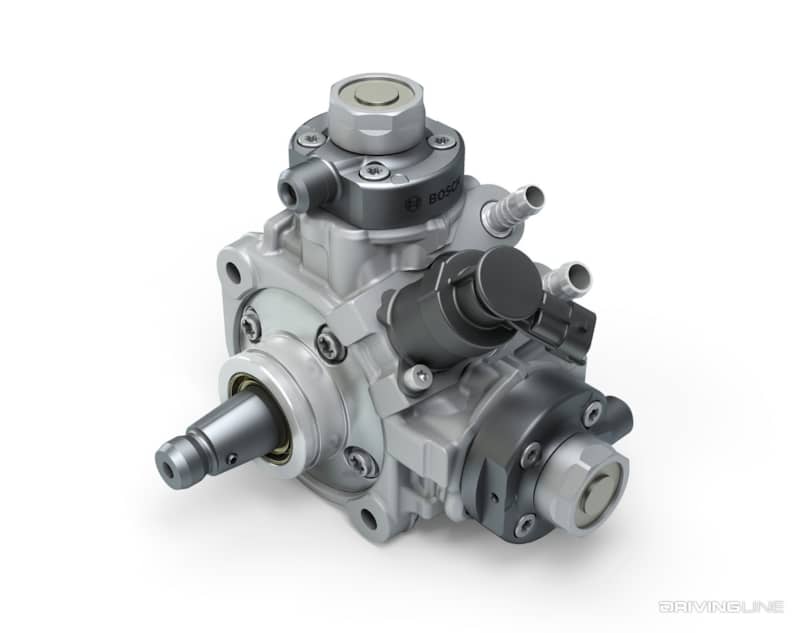
Bosch’s CP4.2 high-pressure fuel pump has been used on the 6.7L Power Stroke since Ford released it for the ’11 model year Super Dutys, but this is far from its only application. Along with being employed on the LML Duramax (’11-‘16), the 5.0L Cummins V8 available in Nissan’s Titan XD, the 3.0L V6 VM Motori in the EcoDiesel Ram 1500, the 3.0L Power Stroke in the F-150 and even the new 1,000 lb-ft 6.7L Cummins in Ram 3500s, it’s become the go-to high-pressure pump for common-rail engine manufacturers. However, while it provides for exceptional power and squeaky clean emissions, it does have one Achilles heel—an Achilles heel that doesn’t just bring about its own downfall.
What Happens Internally
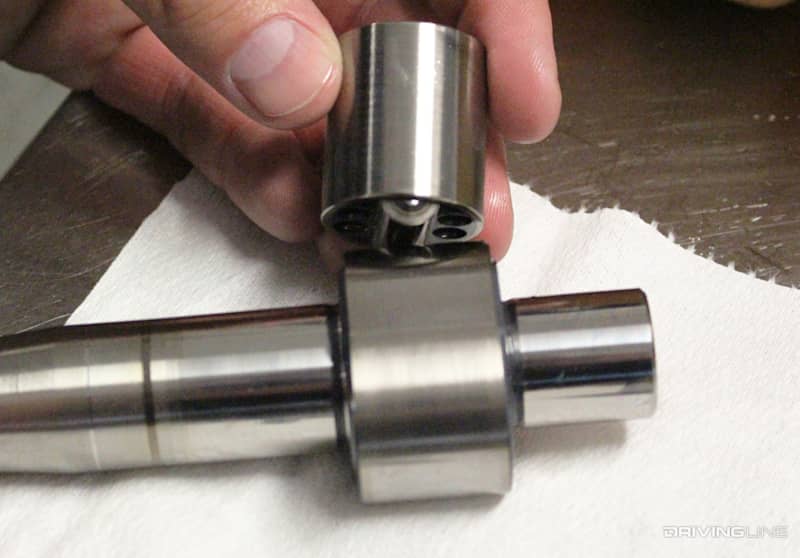
Within the CP4.2 there are two high-pressure chambers, each with its own piston that’s driven up and down by dedicated lobes on the pump’s camshaft. The bottom of each piston integrates a roller lifter that rides on the cam lobe. Unfortunately, there is no mechanical lock or keyway in place to keep the piston from floating and rotating in its bore, which it often does when fuel in the high-pressure system becomes aerated. Demonstration provided by RCD Performance.
Irreversible Carnage
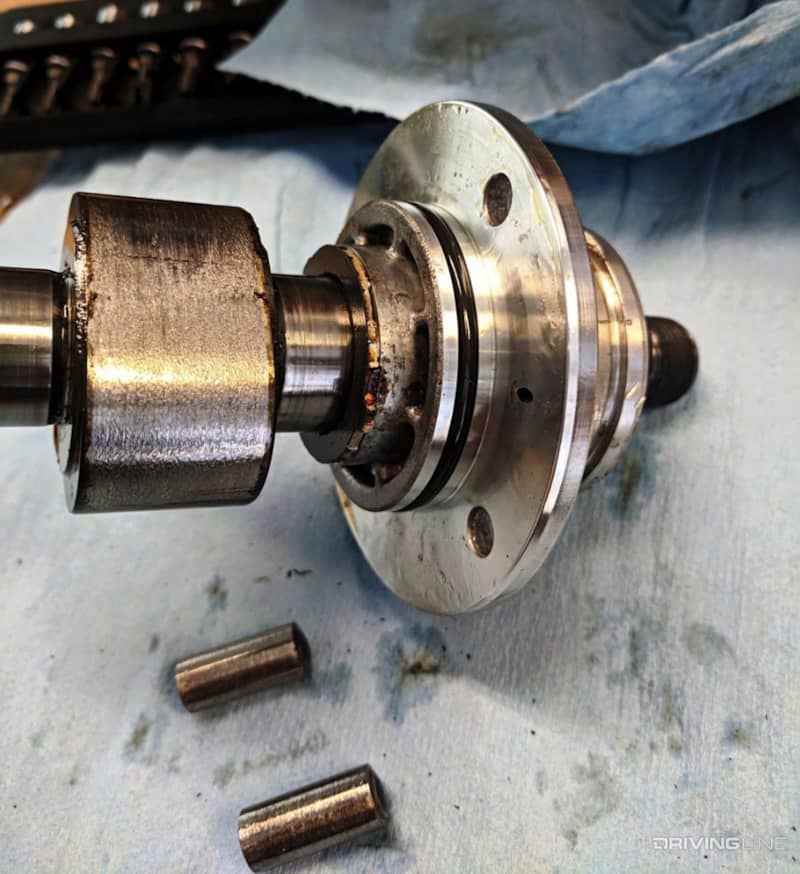
When the piston rotates (usually 90 degrees) in the cylinder, the roller lifter on the bottom (which sits in a fixed position due to being pressed into a follower) hits the cam lobe at a perpendicular angle. From this point on, the roller lifter begins to beat itself to death against the cam lobe, slowly sending metal shards out the high-pressure outlet toward the fuel rails and injectors, but also back to the fuel tank via the return outlet. Typically, the driver won’t notice anything until the truck stalls, but by then it’s way too late.
No Fail Safe From the Factory
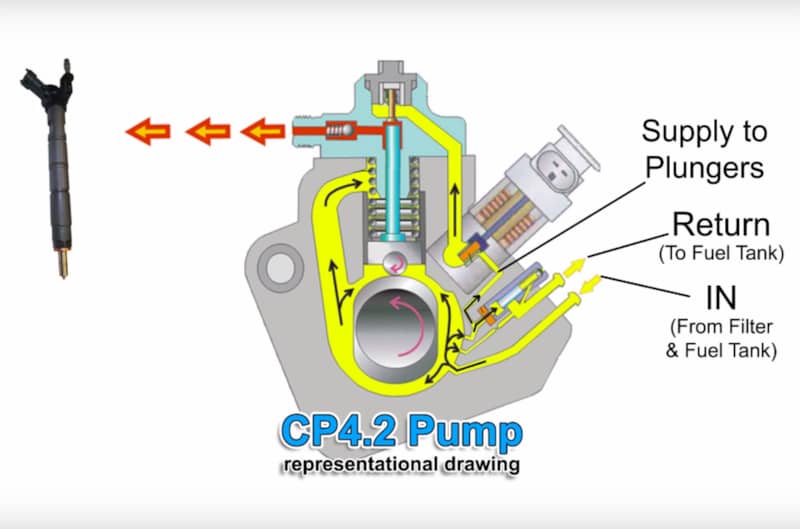
In this diagram of factory fuel flow through the CP4.2, you can see how the metal debris resulting from the failure of the roller lifter is allowed to contaminate the high-pressure fuel within the pump. Pieces of the disintegrating roller lifter and cam lobe are passed directly on to the fuel rails, injectors and the volume control valve (i.e. MPROP), as well as out the return. It’s not uncommon for a CP4.2 failure to cost its owner an entire fuel system (high-pressure and low-pressure), from tank to engine. The illustration above was created by Engineered Diesel, a high volume distributor of S&S Diesel Motorsport’s CP4.2 Bypass Kit.
CP4.2 Bypass Kit
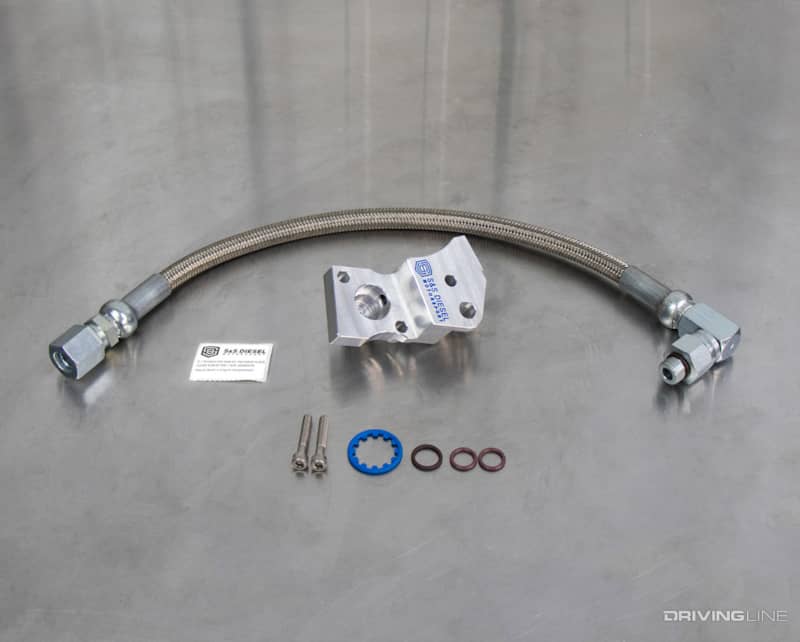
The CP4.2 Bypass Kit comes with everything you need to install it on your ’11-present 6.7L Power Stroke. The contents include an aluminum adapter block, O-rings, one section of braided stainless steel fuel hose with fittings and detailed installation instructions. We’ll note that due to a different length fuel line being required for the install, S&S offers two different kits: one for ’11-’14 engines and one for ’15-newer.
The Pivotal Part
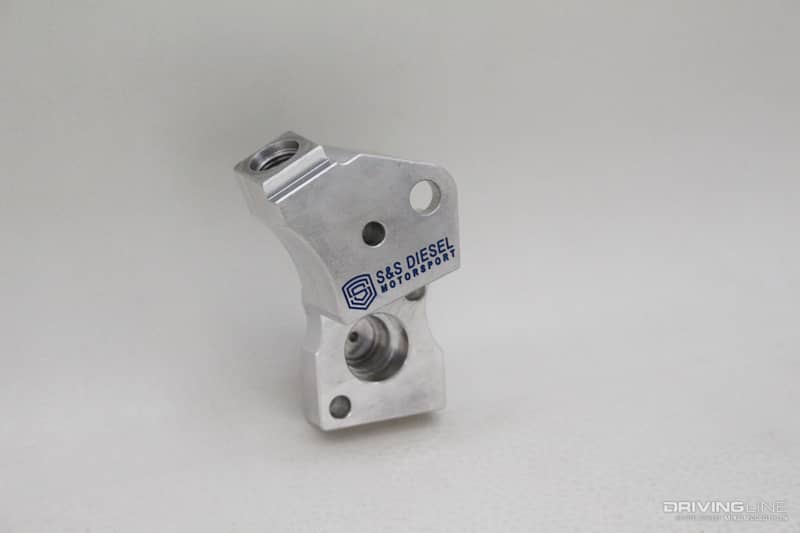
This is the key to the bypass system. The aluminum adapter block stops fuel from entering the plungers within the CP4.2 and reroutes it back to the fuel tank. This allows the return circuit to catch any metal debris should the CP4.2 fail, and not the pricey components downwind in the high-pressure system (namely the aforementioned fuel rails and injectors).
Clearing the Way
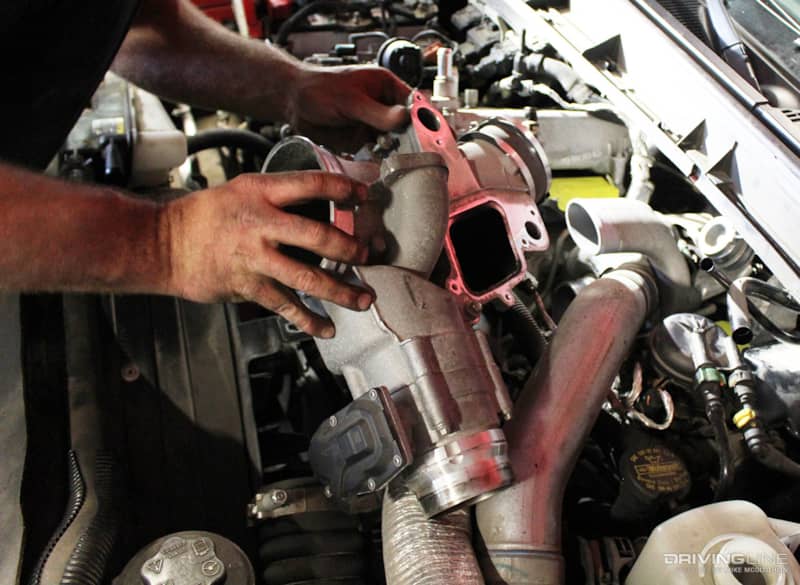
To install the CP4.2 Bypass kit you first have to gain access to the top of the CP4.2 located at the front of the lifter valley on the 6.7L Power Stroke. This calls for the removal of both the upper and lower intake plenums. In its installation pamphlet, S&S points out that cutting or grinding off the leg on the bottom side of the cast-aluminum, lower intake plenum simplifies reassembly with the bypass kit in the mix. The company also suggests removing a casting flash rib on the throttle valve end of the lower intake plenum to clear the MPROP connector later on.
Modifying the Factory Fuel Line Clamp
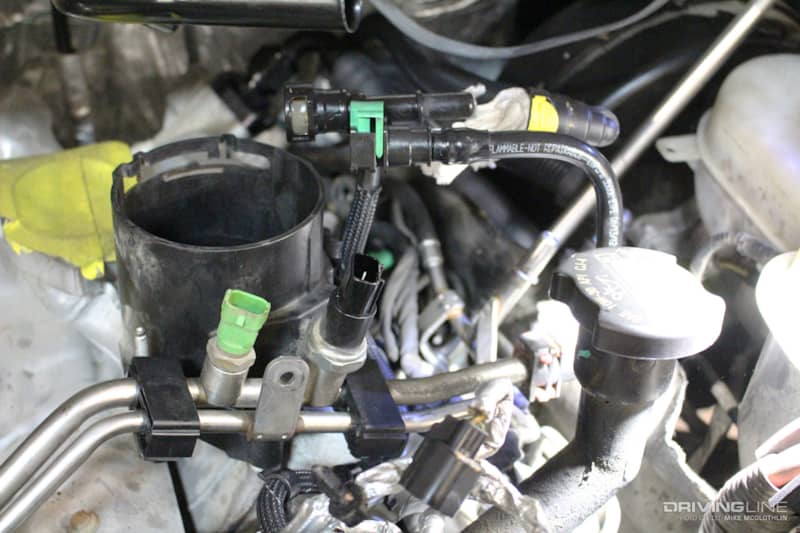
To accommodate the supplied braided stainless steel hose, the black plastic supply and return line clamps near the fuel filter base are removed from the hard supply and return lines. In order for the S&S braided stainless steel hose to be able to rotate in the bracket (and clear the crimp collar on the braided stainless hose), the bracket closest to the braided stainless hose has to be modified.
No Need to Pull the CP4.2
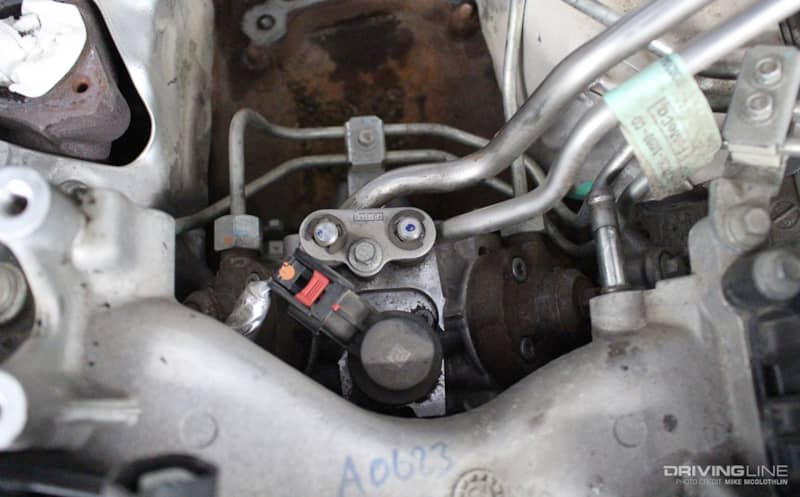
With access gained to the CP4.2, the circlips for both the supply fitting and return fitting are removed. From there, the factory T-bar is removed and discarded but the 10mm flanged head bolt that secured it is retained (it’s used to mount the aluminum adapter block). Then the hard fuel supply line is pulled, with the return line at the pump going untouched. The MPROP is also removed at this time.
A Good Seal
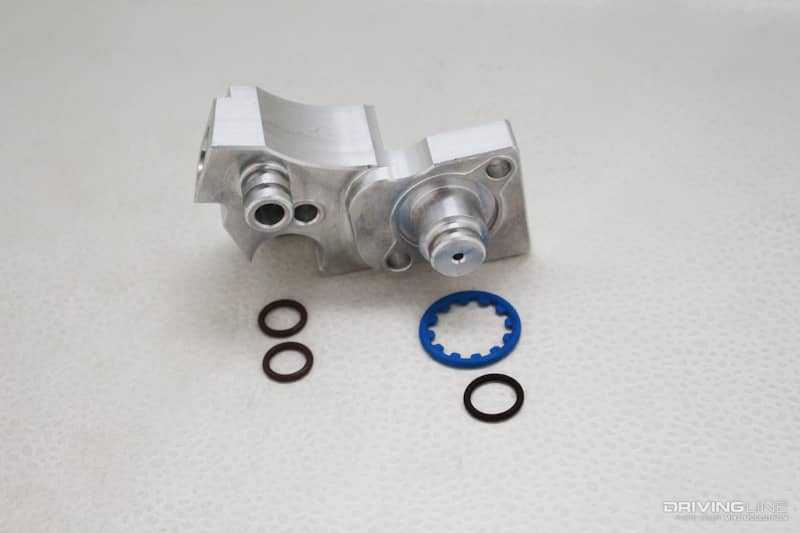
Though you can get away with reusing the factory supply tube O-rings on the adapter block, S&S sends fresh versions for peace of mind. In addition, new O-rings (the two largest units) are included to be fitted to the MPROP before it’s installed in the adapter block. All O-rings should be lubricated.
High Quality, Braided Stainless Replacement Hose
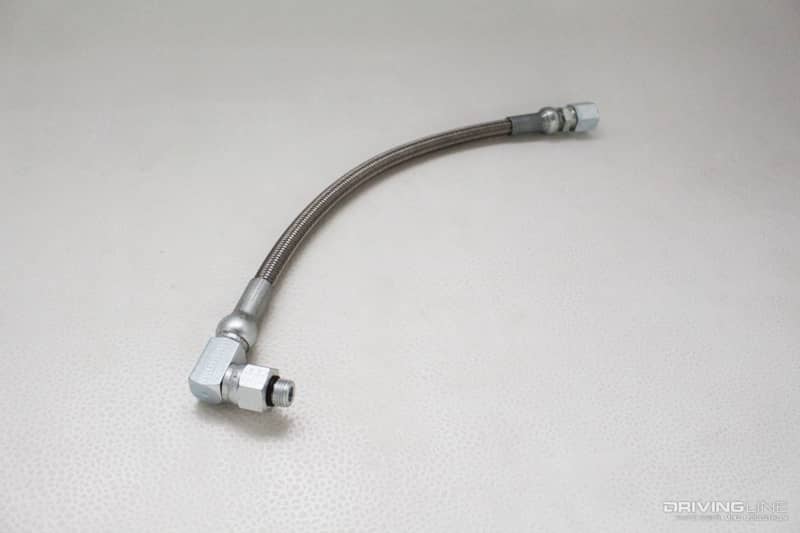
To tie the braided stainless fuel hose in with the factory hard fuel supply line, the hard line has to be cut approximately one inch from the sensor closest to the CP4.2 (by the fuel filter base). It’s vital that the cut be square and the rough edges completely deburred before the compression fitting on the braided stainless fuel hose is connected to the hard supply line. It’s also important to hold off on fully tightening the compression fitting until you’re sure the hose’s routing clears all other engine components in the valley.
Final Touches
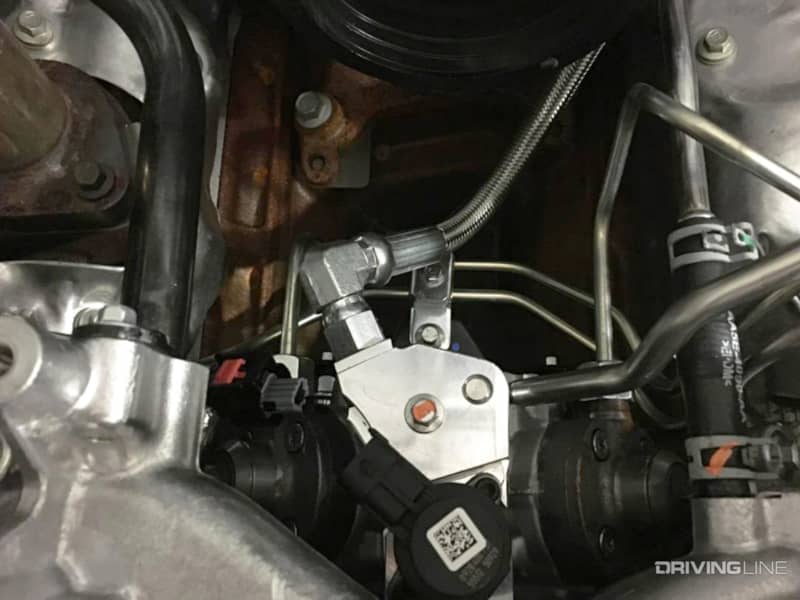
The finished, installed product looks like this. Once the CP4.2 bypass system is in place, it’s important to ensure the braided stainless hose doesn’t come into contact with anything. As the hose runs under the lower intake plenum over toward the passenger side, fuel filter side of the engine bay, you’ll want to make sure it clears the turbo, lower intake plenum and exhaust manifold heat shield.
New Fuel System Flow
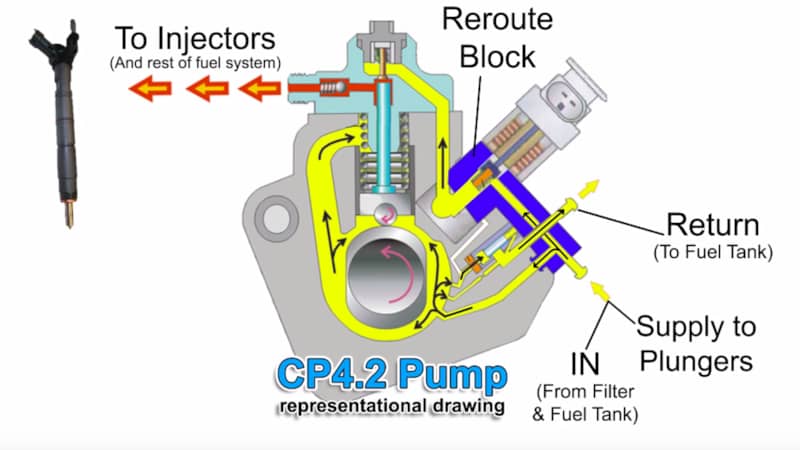
This diagram, again created by Engineered Diesel, illustrates the flow of fuel with the S&S bypass system in place. As you can see in the blue area, fuel supply to the plungers is blocked and rerouted back to the tank. This way, lubricating fuel from the camshaft area is subjected to another round of filtration before going through the fuel system again. All fuel entering the pumping element side of the CP4.2 and flowing toward the injectors is always routed through both of the truck’s fuel filters. Thanks to S&S Diesel Motorsport’s CP4.2 Bypass system, any contamination as a result of the CP4.2 breaking down will not effect the injectors.











